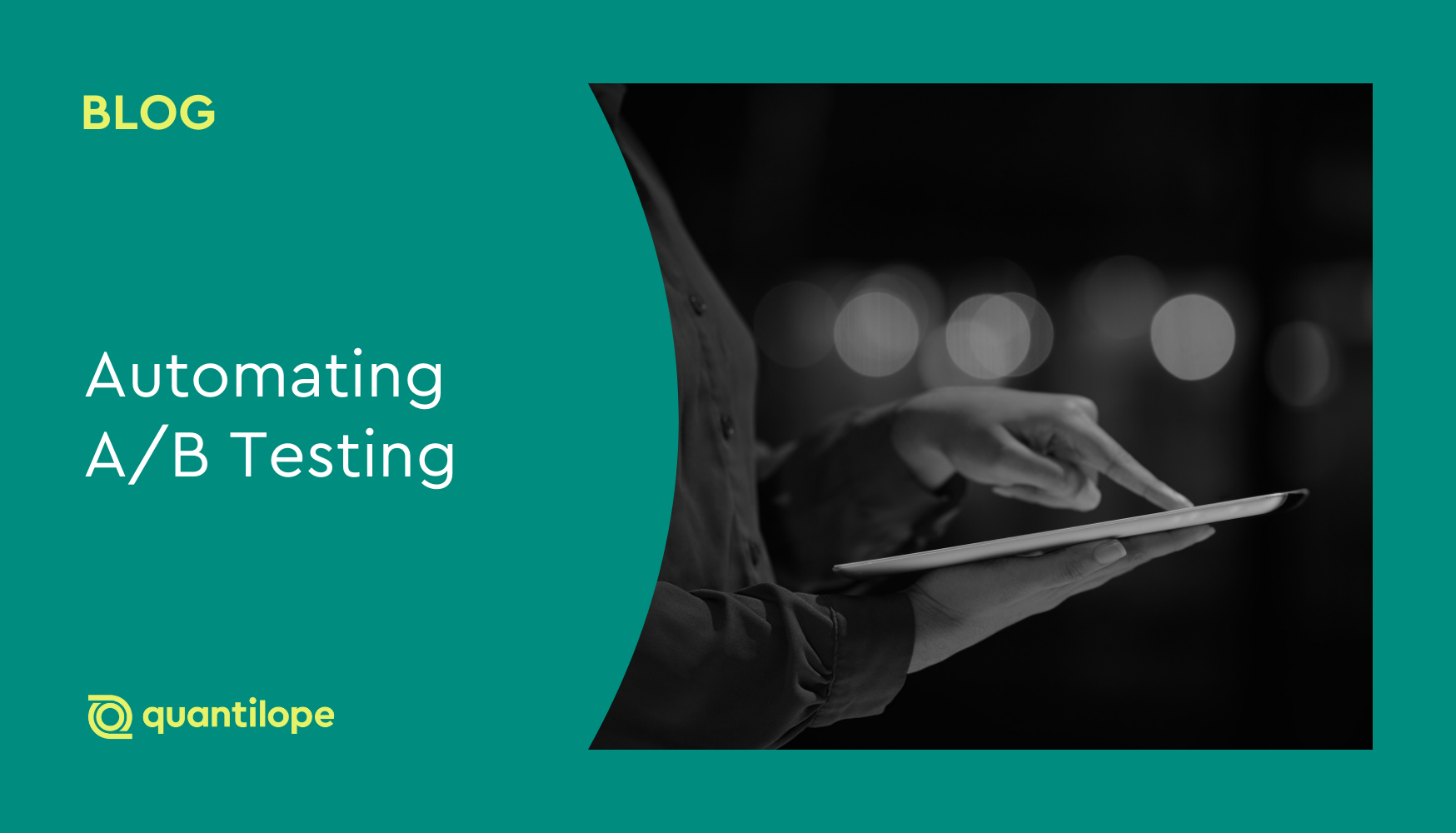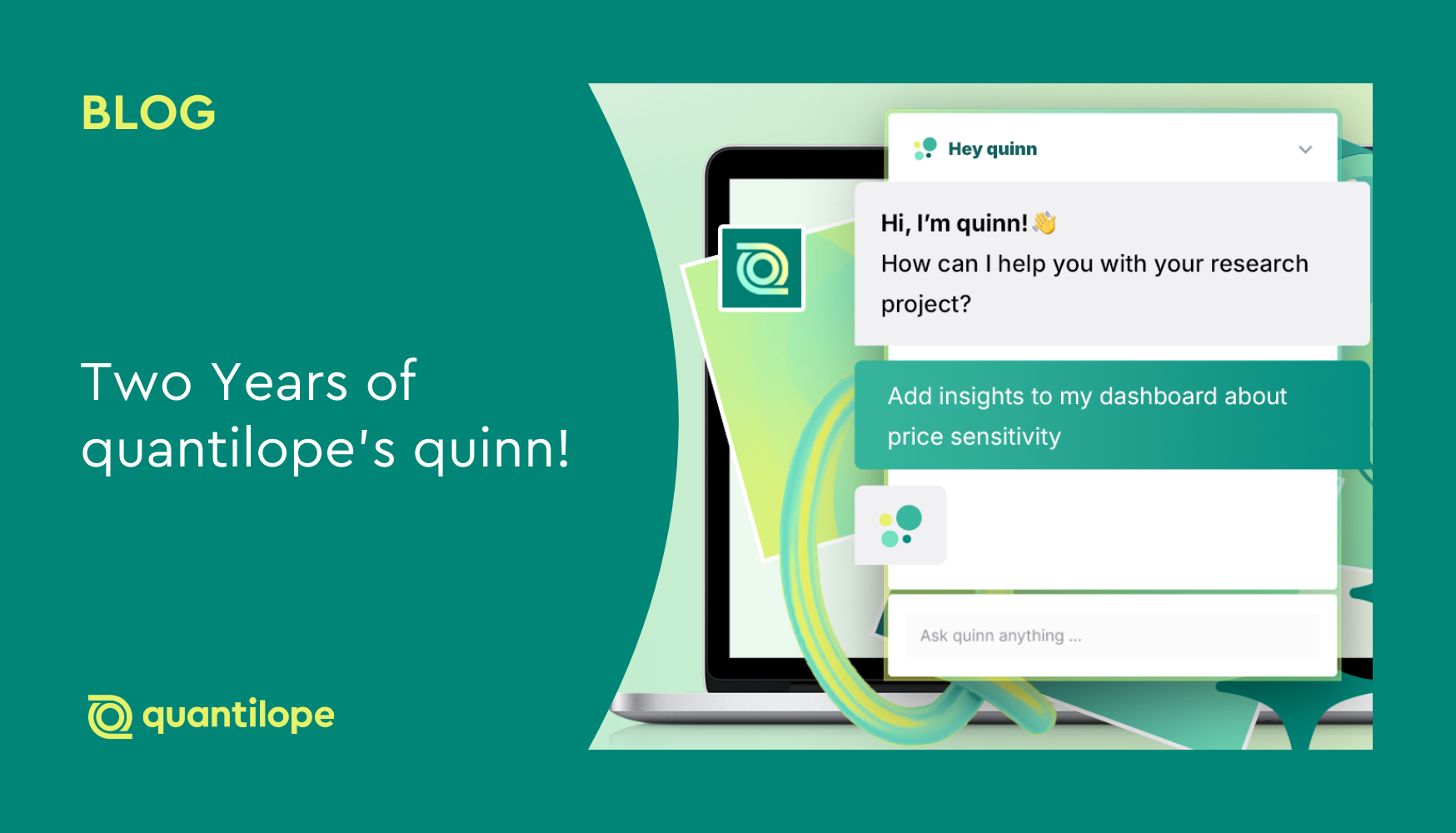This blog post helps researchers understand how to automate their A/B testing process for more efficient market research insights.
Table of Contents
- What is an A/B test in market research?
- Why perform an A/B test in research?
- Understanding the A/B testing process
- How to automate and scale A/B testing
- Example of automated A/B testing with quantilope
What is an A/B test in market research?
A/B testing is a market research methodology that compares different versions of an asset (like a website design, product concept, advertisement, or app idea) to see which final version will work best among your target audience. Brands can choose to test just one variable between assets (like the background color), or, test multiple variables (like different background colors, logo sizes, and imagery) - this is known as multivariate testing.
Whichever you decide (testing one variable or several at a time), A/B testing tools work by presenting the different assets to equally-structured groups of respondents with each group each seeing a different version. Because each group of respondents views one asset in isolation, this is known as Monadic or split testing; and with just two groups, one group is deemed A and the other B - hence the name A/B testing. Typically, respondents are randomly assigned to either group A or group B so that the research team can compare metrics across both groups fairly without bias (i.e. seeing the first asset could influence metrics when seeing a second asset).
The brand running the study will then review the A/B test results to predict real user behavior - how respondents scored various metrics of each asset should represent true target audience perceptions. A/B testing helps a brand decide which elements of a certain asset (or which asset in its entirety) will lead to a higher conversion rate.
What is automated A/B testing?
Automated A/B testing streamlines the process of comparing different versions of digital assets—like webpages, emails, or advertisements—to determine which performs better with your target audience. This automation reduces manual effort, accelerates testing cycles, and enables real-time adjustments based on performance data. Unlike traditional A/B testing that requires manual setup and analysis, automated systems handle traffic splitting, data collection, statistical analysis, and reporting. This allows research teams to run multiple tests simultaneously while focusing on strategic interpretation rather than technical execution.
Back to table of contents
Why perform an A/B test in research?
A/B testing is a great way to do a test run of different ideas so you don’t rely on guesswork or gut feeling for a final asset decision. With A/B testing, brands can make decisions based on actual consumer data.
Another perk of A/B testing is that it can be used iteratively; brands can continue testing new ideas or tweaked versions of an existing idea in subsequent A/B tests before finalizing for launch. Even after launch, as the brand evolves or consumer needs change over time, brands can come back to an A/B testing workflow for website optimization, improved product lines, new brand communications, and more. When brands continue to improve the elements of their business, it improves customer experience and ultimately helps grow profit.
Back to table of contents
Understanding the A/B testing process
Let’s imagine you have a company website (as most companies do) and would like to optimize the landing pages, button functionality, call to action (CTA button), or any other element of the site to see if consumers interact differently with a new version. You would amend the chosen features of your current website and present them to survey respondents for feedback; version A might be your current site, and version B the amended one.
The way respondents react to the amended version would signal how those changes affect things like user experience, click-through rate, conversion rate, or any other metric used to measure business success.
It’s important to note that the success of an A/B test depends heavily on prior knowledge and preparation. You need to have some foundational knowledge of your business problem to know how to go about approaching the solution. In the case of website optimization research, using Google Analytics or other analytical tools to establish your bounce rate, finding out which pages on your site get the highest traffic, and determining where users drop off will help form the new design or functionality features to measure in an A/B test.
A/B testing tools should be thought of as one piece of a larger puzzle - that is, a wider conversion rate optimization (CRO) strategy, which tends to involve a mix of methodologies. Qualitative research - delving into the reasoning behind user preferences, as well as other quantitative methodologies such as Key Driver Analysis can add to an A/B testing study’s results to form a strategic path forward for your business.
Back to table of contents
How to automate and scale A/B testing
Though the A/B testing framework is a fairly simple concept, it can become tedious once a company starts frequently testing multiple concepts, products, advertisements, or other assets. This is where automated A/B testing can provide huge value to client-side research teams to scale their research efforts.
The best A/B testing happens when a company approaches the testing process with automation. To do so, the company would look to leverage platforms that can automate the A/B group assignments, connect to panels instantly, automate significance testing, and display results in real time. Using real-time results, the company’s team members can act on metrics before the A/B test even completes fieldwork and share preliminary insights with stakeholders very early on in the testing process. Real-time insights also mean teams can decide to pause the study and act immediately, revise the A/B testing options and then resume fielding, or, continue fielding until they have a better idea of the next steps.
Back to table of contents
Example of automated A/B testing with quantilope
quantilope’s A/B testing software is fully automated on the Consumer Intelligence Platform (as are 11 other advanced research methodologies). Using either a DIY or Do-It-Together approach with a team of research consultants, or, opting to have it fully managed by the quantilope research team, platform users will upload variables (concepts, web pages, communication materials, advertisements, etc.), select their sample size criteria, and launch the survey without any other manual efforts. The platform will automatically route respondents to either group A or group B depending on least-fill criteria. With the automation of each A/B testing step, researchers can spend more time analyzing the real-time insights for an optimized business or marketing strategy and less time on tedious setup tasks.
Optimizing your marketing strategy with quantilope’s A/B testing
Let’s now consider we’re a business planning a new marketing campaign but we’re considering two iterations that differ in tone, design, and content. Before going live with the campaign, we need to establish which approach is most likely to convert viewers and readers into actual customers.
Knowing quantilope’s A/B testing methodology will automatically route participants to one version of the asset for equal comparison, we’ll ask respondents a number of questions about the ad they’ve seen and observe if any metrics are statistically significant over the other. The concept with the highest-performing metrics will be the winning variation.
Because quantilope offers 15 automated, advanced methods - A/B testing just one of them, we also decide to include a need-based segmentation for understanding which audience segments respond most favorably toward a certain concept. The segmentation might also indicate that it might be worth launching both iterations, yet targeted at different segments of our consumer base. Even before we have the final results, we’re able to start sharing the findings across our team with a single link housing all end-to-end processes in the testing platform.
Whether you want to test variations of your website, finalize product ideas, or fine-tune advertising concepts like the example above, quantilope’s A/B testing tool leverages automation to equip you with fast, high-quality, data-driven decision-making.
To find out more about quantilope’s automated A/B testing, get in touch below!




.png)